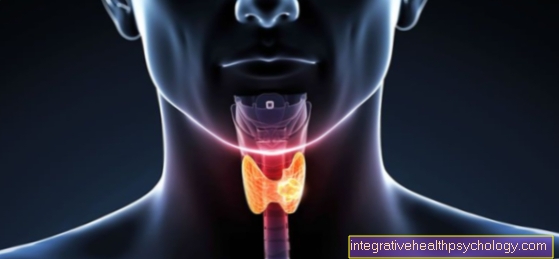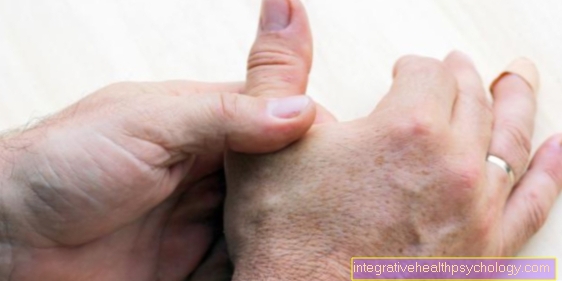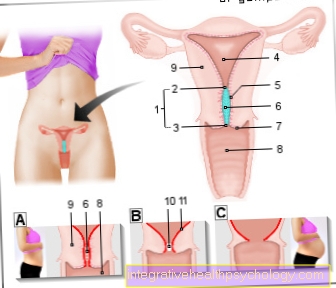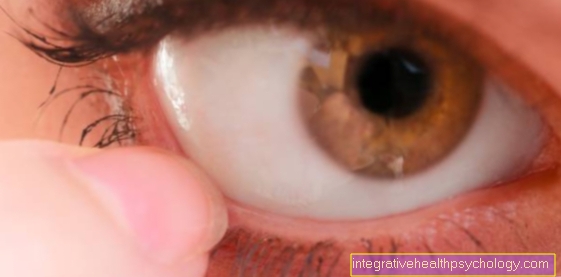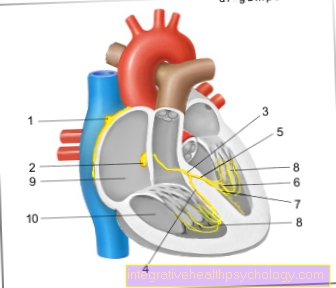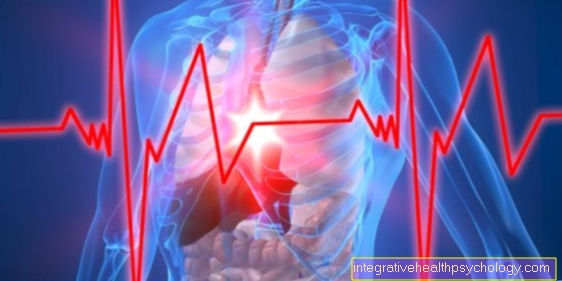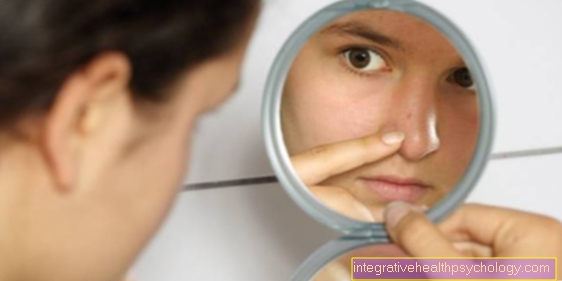Coronavirus- how dangerous is it?
introduction
The coronaviruses belong to the so-called RNA viruses and primarily cause mild infections of the upper respiratory tract and the gastrointestinal tract.
However, there are also sub-types that lead to severe disease courses, such as the SARS virus (severe acute respiratory syndrome) or the novel coronavirus "SARS-CoV-2".

Symptoms
The symptoms differ in type and severity depending on the type of virus.
Some forms of the coronavirus cause only mild symptoms, similar to a cold. This leads to coughing, runny nose and possibly also headaches, i.e. an infection of the upper respiratory tract. Gastrointestinal complaints such as diarrhea are also possible.
The SARS virus results in the "severe acute respiratory syndrome" which can be translated as the severe acute respiratory syndrome. Characteristic here is a sudden, severe course in which the lungs are affected. In addition to a high fever, there is also headache and body aches, chills and dry cough. Pneumonia and shortness of breath are life-threatening.
Another sub-form is the MERS virus, which causes the "Middle East respiratory syndrome". The symptoms are similar to SARS. In addition, however, it can lead to acute kidney failure.
In the case of the new type of coronavirus "SARS-CoV-2", it was found that the severe course of acute respiratory distress syndrome (ARDS) does not result in symptoms of the upper respiratory tract such as coughing or runny nose.
You may also be interested in this topic: Symptoms of pneumonia
What should I do if I suspect a corona virus infection?
If you have actually been in contact with infected people or show typical symptoms of coronavirus infection, you should take certain hygiene measures before going to a doctor.
In order to provide external protection and to protect contact persons, you should wear a face mask and disinfect your hands. It is also important to call the emergency room or your family doctor before you show up to avoid further contact and to be able to make these preparations.
Suspected people are usually isolated immediately in the clinic or practice.
conducted an interview with two sick people - read more about it under We had Corona - it was so dangerous!
transmission
The virus is transmitted by smear and droplet infection.
For example, by coughing or sneezing, fine droplets of viruses can infect other people. The smear infection occurs, among other things, through contact with contaminated surfaces such as door handles. So it is a human-to-human transmission.
Originally, however, transmission from animals to humans (zoonosis) is responsible for the spread of the virus. Depending on the form of the virus, possible animal species are discussed. Bats are common carriers of the virus. Connections to camels could also be established at the MERS. In the case of the new corona virus, crawling cats and snakes are suspected of having triggered the epidemic.
More on this: Droplet infection
How high is the risk of infection?
The exact risk of contracting the virus cannot yet be precisely estimated.
In general, it is important to reduce the risk through hygiene measures such as hand disinfection. A safety distance of 1-2m for people with a potential infection or symptoms of illness is also useful as protection.
In the case of infected people in the immediate vicinity, particular caution should be exercised and it is best to get tested in order to diagnose an illness at an early stage and avoid further transmission.
incubation period
The incubation period also differs depending on the subspecies of the coronavirus.
Usually it is 5-7 days. However, cases of 2 weeks of incubation or shorter times have also been documented.
Duration of illness
The duration of the illness has not yet been conclusively clarified.
The symptoms can persist for a week or longer, although minimal pathogen excretion must be assumed if there are no symptoms. The Robert Koch Institute has drawn up some guidelines for isolation in patients who have already been diagnosed. In this case, lifting the isolation is recommended no earlier than 10 days after the onset of symptoms if certain criteria such as freedom from fever have been met for 48 hours.
causes
The cause of the infection is the transmission of the virus. The body handles it differently depending on the strength of the immune system and the viral load.
The transmission occurs primarily from animal to human, also known as zoonosis. Another human-to-human transmission is possible through smear and droplet infection.
Symptoms are caused by binding to specific host cells. The binding structures of the individual types of coronavirus differ here. The novel cornavirus and the SARS virus bind, for example, to exopeptidases. The MERS virus, on the other hand, binds to the DPP-4 receptor in order to get into the host cell. This special receptor is believed to be located only in the bronchi and kidneys, which is why MERS can lead to kidney failure.
How did the coronavirus come about?
There are a wide variety of coronaviruses. The novel coronavirus was believed to have been transmitted by bats, possibly via a number of other animals that were also infected with the virus. It is believed that the first contact with people took place in a market in the Chinese city of Wuhan.
Viruses often mutate, which sometimes creates new properties. The novel coronavirus is more infectious than the other viruses in its group and is therefore transmitted faster. A prolonged survival time outside the host, for example on contaminated surfaces, is discussed among other things.
Diagnosis
The diagnosis is confirmed by laboratory tests.
These are carried out if symptoms exist or if contact with infected people is known. A so-called PCR is carried out in order to detect the RNA, i.e. genes of the virus, for example in the blood or the cough.
An imaging, such as an X-ray, can also help determine if the lungs are inflamed.
Also read our topic: X-ray of the chest
How quickly can you diagnose coronavirus infection?
Depending on the laboratory, a virus infection can be detected in a sample within a few hours using PCR (polymerase chain reaction).
If you have the test done in a practice, it depends on the transport of the samples how quickly the result is there. This can take a few days.
The samples are taken either from the nasopharynx or the deep airways, for example sputum in the case of a productive cough. Most of the health insurance companies have been taking over the test since the end of February 2020.
therapy
There is no therapy for the cause of this disease as yet.
It is primarily treated symptomatically. This means that the symptoms are reduced, among other things, by administering oxygen and closely monitoring the patient. Antibiotics in the event of bacterial superinfection and infusion therapies to stabilize the circulation are also options.
Experimentally, various antivirals (antiviral drugs) developed for other diseases caused by viruses such as HIV, or interferons are used.
Is there an antidote?
There is currently no antidote.
The therapy is purely symptomatic, i.e. to alleviate the symptoms. A vaccination is still being researched. The first test of the vaccine is to take place in April in China.
prophylaxis
There is no specific prophylaxis like vaccination.
However, you can protect yourself against infection by taking additional measures. These typical methods help to protect yourself from any kind of illness. General hygiene measures such as hand washing and disinfection, especially after direct contact, are important. Wearing a face mask can also reduce the likelihood of infection through droplets.
In general, you shouldn't travel to risk areas like China. More precise recommendations have been formulated, for example, by the Robert Koch Institute (RKI).
How do I protect myself?
There are a few things you can do to reduce your risk of infection. The most important are listed again here:
- regular hand disinfection and washing
- avoid large crowds
- Avoid body contact, preferably a safety distance of 1-2m
- face mask if necessary
Hand disinfection works so well
Hand disinfection has a high priority in avoiding infection with the virus, as the coronavirus can persist on contaminated surfaces for a few days and is thus spread as a smear infection.
For example, an infected person can put their hand over their mouth when coughing and use it to hold onto the train. The next person, who may not have been in contact with the wearer, grabs the handrail and can thus become infected as well.
When disinfecting, however, it is important to note that not all disinfectants are also effective against viruses.Many agents and gels available in drugstores only work against bacteria. Therefore, when buying, you should pay attention to an expanded spectrum of pathogens.
More on this: 6-step disinfection- Proper hand washing and disinfection
A mouthguard works so well
There is no scientific evidence that wearing a face mask reduces the risk of infection. On the contrary, it can even lead to a false sense of security that people pay less attention to other hygiene measures.
The other way around, if you suspect an infection, it makes sense to wear it to avoid infecting other people. The mouthguard can hold back droplets that would be distributed when sneezing or coughing.
forecast
In particular, people with underlying diseases such as diabetes or elderly patients experience severe disease.
Pneumonia and the development of acute respiratory distress syndrome are potentially life threatening. The few therapeutic approaches in particular can lead to increased complications.
Another complication is bacterial superinfection. In addition to the lung infection caused by viruses, there is also a colonization by bacteria. The immune system is therefore weakened even further. Therefore, early detection of this superinfection is essential in order to get the disease under control and to initiate antibiotic therapy.
In addition to diabetes and age, immunosuppression and cancer are factors that make the prognosis worse. People with pre-existing chronic lung diseases such as COPD or those with heart disease are also at risk.
You might also be interested in these topics:
- Acute respiratory failure
- Blood poisoning
What is the mortality and the probability of survival?
The mortality rate from infection with the novel coronavirus can be assessed as relatively low. The probability of survival is therefore very high.
It is noticeable that mortality increases with age. According to current figures, it is highest at an age of over 80 at 14.8%. For all persons under the age of 50, the mortality rate is even less than 1% and no deaths of children under 10 years have been recorded. Even among 70-79 year olds, mortality drops to 8%. These numbers refer to the Chinese population. In Germany, even lower mortality rates are to be expected.
These can be the long-term consequences of a coronavirus infection
So far, no precise information on the long-term effects is known.
If the course is mild and the infection has been overcome, no further consequences are to be expected. Severe symptoms and a possible superinfection can lead to consequences such as damage to the lung tissue.
That's how dangerous it is for babies and toddlers
Babies and young children have a lower infection rate. The exact reason for this is not known.
However, it can be said that even in infected children the mortality rate is much lower than in adults. In babies and young children, the death rate is 0%. There have been no deaths in this age group.
In general, old people are more of a risk group, often in connection with other previous illnesses. Pre-existing conditions such as COPD or arteriosclerosis do not occur in childhood.

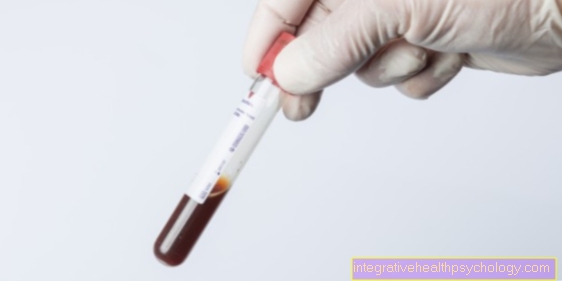



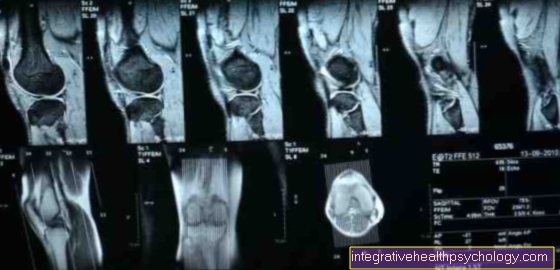
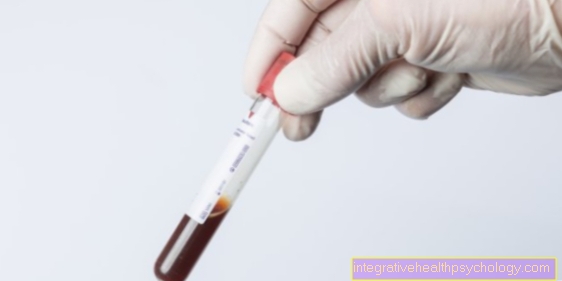


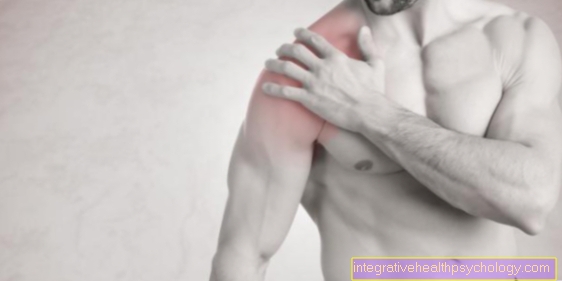
.jpg)
